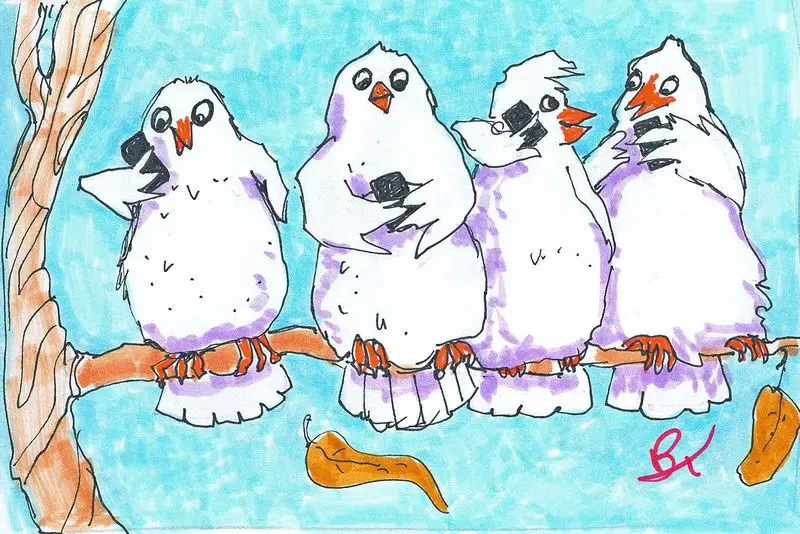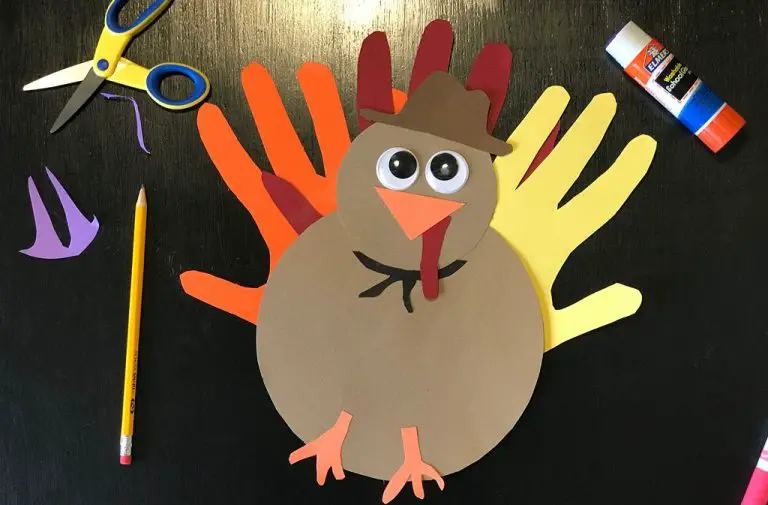What Is Four Calling Birds?
The “Twelve Days of Christmas” is a popular Christmas carol that dates back to at least the mid-1700s. It enumerates a series of increasingly grand gifts given by a suitor to his beloved on each of the twelve days of Christmas, ending with twelve drummers drumming on the twelfth day. The song has been covered by many artists and is commonly sung during the holiday season. One of the most well-known elements of the carol is the “four calling birds” gifted on the fourth day, which has intrigued listeners for centuries. While the exact meaning behind the lyrics is uncertain, the calling birds hold significance as one of the song’s iconic images. This article will explore the history behind the carol, dive into possible interpretations of the four calling birds, and examine how they are viewed in modern adaptations of the classic Christmas tune.
Meaning Behind the Lyrics
The lyrics to “four calling birds” in the popular Christmas song “The Twelve Days of Christmas” have a symbolic meaning that goes deeper than just birds singing. Calling birds are thought to represent the four Gospels of the New Testament – Matthew, Mark, Luke and John. The Gospels tell the story of Jesus Christ’s life and ministry. Just as calling birds proclaim and spread their message through song, the Gospels proclaim and spread the message of Christ.

This interpretation gives the lyrics a religious meaning. The four calling birds represent the spread of the Christian faith and the messages contained in the four Gospels. Like the birds singing loudly and clearly, the Gospels were meant to tell the story of Jesus far and wide. So while on the surface, “four calling birds” refers to birds that sing, its symbolic meaning points to an important part of the Christian faith – the four Gospels.
Calling Birds in the Song
The “calling birds” in the popular Christmas carol “The Twelve Days of Christmas” refer to specific birds that would have been familiar to people in England when the song was first composed in the 18th century.
The earliest known version of the lyrics printed in English Mirth and Entertainment Or, Pieces of Wit of the Most Eminent Poets and Poesies of the Age in 1780 used the term “colly birds.”
According to sources, “colly” was a regional term meaning “black as coal” and referred specifically to the European blackbird. The blackbird, with its melodious song, was considered a calling bird that could be trained to “speak” and imitate sounds.
Later versions changed “colly birds” to “calling birds,” likely referring to the same blackbird species. So the four calling birds in the song represent four European blackbirds.
Origins
The origins of the “four calling birds” in the song “The Twelve Days of Christmas” can be traced back to early versions of the song from the 1700s. In the earliest known version, published in 1780, the gift was “four colly birds.” Colly is an archaic term meaning “black as coal,” and refers to blackbirds.
It was Frederic Austin in 1909 who first changed “colly birds” to “calling birds” when he introduced the now standard melody and lyrics in his musical arrangement “The Twelve Days of Christmas.” Austin’s version helped popularize calling birds as the canonical lyric.
According to the Library of Congress, the choice of birds may have been influenced by the introduction of exotic bird species to England in the 1770s, such as the red-legged partridge. The partridge known for its red legs and plumage, became fashionable, and may have inspired the calling birds reference. While the exact species of calling bird is unspecified, songbirds with distinctive vocalizations were likely in mind.
So while the original folk lyrics mentioned “colly birds,” Frederic Austin’s 1909 version cemented “calling birds” as the standard lyric. The birds represent songbirds prized for their beautiful plumage and birdsong.
Significance
The fourth gift in the “Twelve Days of Christmas” song is four calling birds, which likely refers to an actual bird species like the common blackbird, European turtle dove or grey partridge (www.mlive.com). Calling birds were specifically chosen for the fourth day because of the symbolism associated with the number four and with birds in general.
The number four often represents the four seasons or the four elements (earth, air, fire, water). Giving four calling birds may be a reference to giving gifts representing each of the seasons or elements (backyardpoultry.iamcountryside.com).
Birds have long been seen as symbols of spirituality, freedom, elegance and peace. The gift of calling birds evokes these meanings and signifies giving spiritual gifts, uplifting the recipient’s mood, or bestowing peace and harmony (blogs.loc.gov). Calling birds specifically represent expressive, melodious gifts that lift the spirits.
Overall, the four calling birds in the song symbolize giving well-wishes in song, as well as gifts representing the seasons, elements, spirituality, freedom and peace.
Religious Interpretation
The “Four Calling Birds” in the song “The Twelve Days of Christmas” are commonly believed to represent the four Gospels of the New Testament – Matthew, Mark, Luke and John. This Christian symbolism stems from the birds “calling” out or proclaiming the message of the Gospels.
The four Gospels contain the canonical narratives of Jesus Christ’s life, death, and resurrection. They are considered the most important books of the New Testament and foundational texts of Christianity. The Gospels provide four unique perspectives on the life and ministry of Jesus.
Matthew was one of the twelve apostles and his Gospel aims to present Jesus as the Messianic King and descendant of David. Mark likely recorded the recollections of Simon Peter and emphasizes Jesus’ authority and miracles. Luke was a physician and companion of Paul who portrays Jesus as the Savior of all people. John provides a theological view of Jesus as the incarnate Word of God.
The four Gospels together reveal the complete story of Christ and deliver the good news of salvation through faith in Him. Referring to the Gospels as Calling Birds highlights their role in spreading the Christian message to the world. Just as birds vocalize melodious calls, the Gospels loudly proclaim the coming of the kingdom of God through Christ. The four birds calling out delivers a beautiful chorus of the foundational Christian story to all who have ears to hear.
Bird Symbolism
Throughout history, cultures around the world have ascribed symbolic meaning to birds. Birds are often seen as representing freedom, hope, new beginnings, joy, and peace due to their ability to soar high above the earth (Source: https://www.birdzilla.com/learn/bird-symbolism-meaning/).
In many myths and folklore, birds symbolize the soul or spirit, capable of travelling between worlds. This is likely because of their ability to fly and migrate long distances (Source: https://www.legit.ng/ask-legit/top/1321837-bird-symbolism-10-common-birds-meant-represent/). Birds like doves and eagles are prevalent across cultures as symbols of peace, nobility, and divinity.
The coloration and behavior of certain bird species also lend them particular symbolic meanings – for instance, bluebirds represent happiness and prosperity while the return of migrating birds like swallows herald the arrival of spring. Overall, birds have inspired rich cultural meaning and symbolism throughout human history.
Modern Adaptations
The “four calling birds” lyric has been adapted and referenced many times in modern pop culture. Some notable examples include:
In the popular Christmas song “The 12 Pains of Christmas” by Bob Rivers, the lyrics are changed to “four calling birds, three French hens, two turtle doves, and a beer in a pear tree.” This spoof pokes fun at the unusual and repetitive gift-giving in the original song.
The TV series Glee featured a version of “The Twelve Days of Christmas” in a 2011 Christmas episode, with the “four calling birds” lyric changed to “four calling nerds” as part of the humor and parody in the show.
A holiday commercial for an insurance company portrayed four representatives calling customers to remind them to sign up for coverage, a play on words with the “four calling birds” line.
The animated comedy Family Guy also referenced the birds in an episode, with Peter Griffin receiving a gift basket containing “four calling birds” that proceeded to call him on his cell phone, ringing repeatedly.
Overall, the quirkiness and repetition of the four calling birds in the original carol has lent itself to many humorous references and variations in pop culture over the years.
Calling Birds Today
Calling birds, like many other bird species, face significant threats and declining populations today. According to the Cornell Lab of Ornithology, nearly 3 billion birds have been lost in North America since 1970, which represents a 30% drop in the total bird population (Cornell Lab of Ornithology). Major factors driving these declines include habitat loss, climate change, pesticides, collisions with buildings, and predation from cats.
The four calling birds specifically mentioned in the Christmas carol refer to colly birds or blackbirds. Populations of many blackbird species have seen steep declines. For example, Rusty Blackbirds have decreased by 85-95% in the last 50 years, making them one of North America’s most rapidly declining species (PBS). Conservation efforts are underway to try to reverse these trends through protecting habitats, reducing collisions, and addressing climate change. However, substantial action is still needed to ensure calling birds and other species do not go extinct.
Conclusion
In summary, the “four calling birds” in the Twelve Days of Christmas song have an interesting history and meaning behind them. They likely originated as a coded reference to the four gospels in the Bible – Matthew, Mark, Luke and John. The fact that the birds are “calling” or “colly” birds reinforces this religious symbolism, as they represent the spreading of the gospels’ messages. While the exact species of birds may be unclear, colly birds were small black birds known for their loud, repetitive calls. The birds hold religious significance but also connect to wider bird symbolism of communication, freedom and perspective.
The “four calling birds” tradition endures today both in the song’s continued popularity around Christmas, as well as in modern holiday decorations, cards and pop culture adaptations. While the religious coding behind the birds may not be as widely known now, they remain a beloved part of Christmas celebrations around the world. Overall, the unusual “gift” of four birds highlights how even small elements in the classic carol have developed rich layers of meaning over time.






